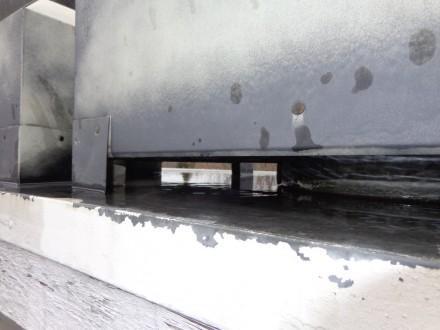I recently blogged about how popular homeowner maintenance inspections have become, and said I'd follow up with a blog post on how homeowners can conduct their own maintenance inspections. I've already blogged about how potential home buyers can conduct their own cursory home inspections (Exterior Home Inspection Checklist and Interior Home Inspection Checklist), but a homeowner maintenance inspection is a little bit different; this inspection can be much more involved, as there are no time constraints.
Roof
The best way to inspect a roof is by walking its surface. If it's safe to do so, get on the roof to inspect it. Need a ladder? I recommend the Little Giant. If it's not safe to walk the roof, inspect it by leaning a ladder against the edges in several places to get a close look. If that's not possible or not safe, walk around the exterior and carefully inspect all sides of the roof. If needed, use binoculars and slowly scan everything. Pay special attention to the south-facing portions of the roof; these areas almost always fail first. If there are curled or deteriorated shingles, it's probably worth having a follow-up inspection done by a trusted roofing contractor.
Loose or missing shingles should be addressed right away. Identifying loose or missing shingles can sometimes be tough to do from the ground though. Click on the photo below for a large version; do you see the missing shingles?

The missing shingles were located at the ridge, right by the tree. Click here for a close up shot. Again, if you're using binoculars to inspect the roof, scan everything slowly. This type of inspection should be conducted at least once a year.
I have several examples of other roof defects that can typically be seen from the ground at the very beginning of this post: http://www.structuretech1.com/2013/04/home-inspection-checklist-exterior/ .

If there are any tree branches in contact with the roof or even close to the roof (or siding), trim them away. Tree branches prevent the roof from properly drying, provide an easy way for pests such as raccoons to get on the roof, and can easily rub holes right through the shingles.


If the roof is covered with debris, such as leaves and tree branches, clean the roof off.
Masonry Chimneys
Chimneys can only be fully inspected by getting up on the roof or by using a ladder that's as tall as the chimney, if the chimney is located along an outside wall. Perhaps the most important part of the chimney to inspect is the crown, which is the top of the chimney that sheds water and prevent water intrusion. If the crown is cracked or washed out, water can get into the chimney and cause deterioration to the chimney, as well as water leaking into the house. The photo below shows a chimney crown in need of repair or replacement.


Look for damaged or missing bricks, cracks, and missing mortar at the walls of your chimney. When it comes to recommending repair to masonry chimney walls, I typically use my awl as a gauge. I've never made this a "policy", and I've never even thought about it before, but as I'm sitting here writing this blog post I realize that I use my awl as a guide to calling out repairs. If I can stick my awl through a hole in the side of the chimney, I call it out for repair.

Chimney flashing is very important as well, but proper and improper chimney flashing could take up a blog post all on its own. The photo below shows a nearly comical example of bad chimney flashing.

If your chimney has a bunch of black goop at the intersection between the chimney walls and the roof, it's an unprofessional installation or a hack repair that will probably leak soon. Get someone out to have the flashing redone before it leaks.

Other Chimneys
Wood chimneys, or wood chimney chases, are especially vulnerable to moisture intrusion and rotting at the walls because they're completely exposed to the elements on all four sides; no soffits, no gutters. Get up on the roof or use a ladder to get a good look at any wood chimney chase, especially if the chimney is clad with some type of siding that needs to be caulked at the ends, such as lap siding. Wood and older wood composite siding is especially prone to rotting.
If there is rotted siding, replace it. If the siding needs caulk at the ends, get out your caulking gun and go to town. For more info on wood chimney chases, click here: Inspecting Wood Chimneys.
For chimney chases with a metal top, make sure that the top slopes away from the center of the chimney to prevent water from ponding on the top of the chimney. If water ponds, it will only be a matter of time before water starts to leak down through the center of the chimney. I've inspected a number of wood chimney chases for gas fireplaces where water was leaking in right at the vent because the metal cap wasn't properly sloped away from the center, which allowed water to pond and leak. The photos below show a metal chimney cap that was leaking.

To verify the cause of the leaking, I simply dumped a couple gallons of water on top of the chimney; water began to drip into the fireplace shortly after that. For the record, this was at a troubleshooting inspection, where the owner was trying to get to the bottom of the leaking. This wasn't a traditional home inspection.

That's all for today. Next week I'll be posting about how to inspect the rest of the exterior of your own house.
Author: Reuben Saltzman, Structure Tech Home Inspections







